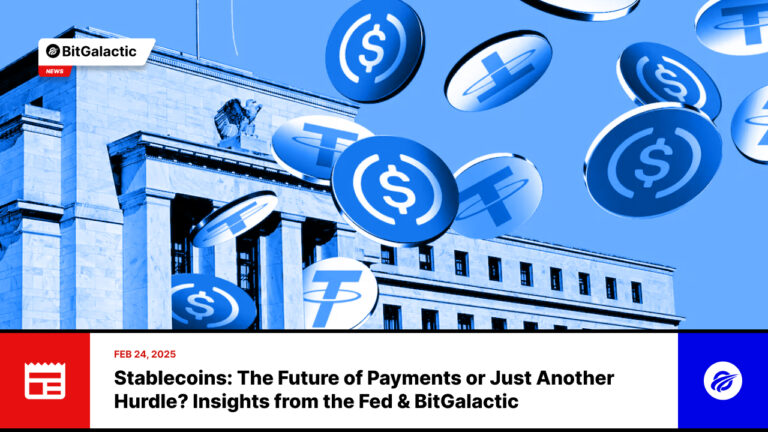Stablecoins: The Future of Payments or Just Another Hurdle? Insights from the Fed & BitGalactic.
Stablecoins are no longer just a tool for crypto traders avoiding volatility—they’re creeping into mainstream payments. But will they truly revolutionize the way we pay, or are they facing insurmountable barriers? A Federal Reserve researcher and industry leaders weigh in on the potential of stablecoins as the next big payment method.
The Fed Takes Notice
Chris Colson, a payments researcher at the Federal Reserve Bank of Atlanta, has spent years tracking how Americans pay for goods and services. During the COVID-19 pandemic, his team documented the shift from cash to digital transactions. Now, stablecoins—cryptocurrencies pegged to fiat currencies like the U.S. dollar—have captured his attention.
Colson noted that the stablecoin market has surpassed $230 billion, putting it on par with the GDP of small nations. What’s more surprising? Retail giants like Whole Foods and Regal Cinemas are beginning to accept them as payment.
“This isn’t speculation—it’s happening,” Colson said. But the path forward isn’t without obstacles.
Adoption: The Good, the Bad, and the Ugly
To put stablecoins to the test, Colson and a colleague attempted to buy movie tickets with them. The process? Anything but seamless. From downloading an app to explaining the transaction to a confused cashier, the experience highlighted just how far stablecoins must go before becoming a frictionless payment method.
Yet, history shows that innovation takes time. Apple Pay faced years of regulatory hurdles and slow adoption before becoming mainstream. Kevin Lehtiniitty, CEO of Borderless.xyz, believes that the Fed’s open discussions about stablecoins signal bullish momentum for the industry.
“The fact that the Atlanta Fed is even discussing stablecoins in a positive light suggests a shift in sentiment from policymakers,” he noted.
BitGalactic’s Take: A Paradigm Shift or Regulatory Quagmire?
From BitGalactic’s perspective, stablecoins represent both a massive opportunity and a regulatory minefield. On one hand, they offer businesses and consumers an efficient, borderless way to transact—something that traditional banks and credit card companies struggle to provide. On the other hand, the regulatory landscape remains murky.
Two stablecoin bills are currently making their way through Congress, aiming to establish clear rules for issuers. If passed, they could fast-track stablecoins into mainstream finance. However, until clear guidelines are in place, traditional financial institutions remain hesitant.
Major banks like JPMorgan Chase and Bank of America are the backbone of the U.S. payments ecosystem, and they won’t dive into stablecoins without strong regulatory oversight. “There aren’t any regulatory guidelines that dictate what these organizations must do,” Colson admitted. “Until that happens, concerns will remain.”
The Battle of Issuers: Transparency vs. Secrecy
The debate over stablecoin legitimacy is also playing out among issuers. Tether (USDT), the largest stablecoin provider, has opted out of the EU’s MiCA regulations and relies on attestations rather than independent audits. Circle (USDC), backed by Goldman Sachs, has taken the opposite route—fully complying with MiCA and undergoing Deloitte audits.
This divergence highlights a crucial factor: for stablecoins to gain mass adoption, trust and transparency are paramount. Consumers and institutions need assurance that their digital dollars are backed by real reserves.
The Road Ahead
Despite the hurdles, stablecoin adoption is accelerating. Fintech giants like Stripe and PayPal have integrated stablecoins into their platforms, and companies like Starlink are leveraging them for international transactions.
But the biggest challenge remains: consumer trust and ease of use. From phishing scams to wallet security, the industry must address safety concerns before stablecoins can rival Apple Pay or Venmo.
As Colson pointed out, even groundbreaking technologies take time to reach mass adoption. “It took ten years for Apple Pay to finally catch on,” he said. Stablecoins might just be on a similar trajectory—but only if they can navigate the regulatory and technological challenges ahead.
For more in-depth insights into the crypto and financial landscape, stay tuned to BitGalactic.
Share this post


